Total Weight:
57 lbs (25.85 kg)
Frame Material:
Aluminum Alloy
Frame Sizes:
21 in (53.34 cm)Frame Types:
High-Step, Step-Thru
Frame Colors:
Matte Super Black, Polished Aluminum Silver
Frame Fork Details:
High Tencil Steel
Gearing Details:
7
Speed 1x7 Shimano Nexus Internally Geared HubShifter Details:
Microshift Index Triggers on Right Bar
Pedals:
Aluminum Alloy Platform
Stem:
Adjustable Angle
Handlebar:
Low Rise
Brake Details:
Promax Mechanical V-Brakes, Tektro Levers with Motor Cutoff
Grips:
Rubber, Ergonomic
Saddle:
Velo Low Profile Hybrid
Rims:
Double Walled Aluminum Alloy
Spokes:
Stainless Steel
Tire Brand:
CST City, 700 x 38c
Wheel Sizes:
28 in (71.12cm)Tire Details:
Kevlar Lined, Reflective Sidewall
Tube Details:
Schrader Valve
Accessories:
Deflopilator Spring to Stabilize Front Wheel, Front and Rear LED Lights, Rear Carry Rack with Pannier Blockers and Thick Tubing, Fully Enclosed ABS Plastic Chain Guard, ABS Fenders with Mud Flaps, Single Sided Kickstand, Bell on Left Bar
Other:
Lockable Removable Battery Pack
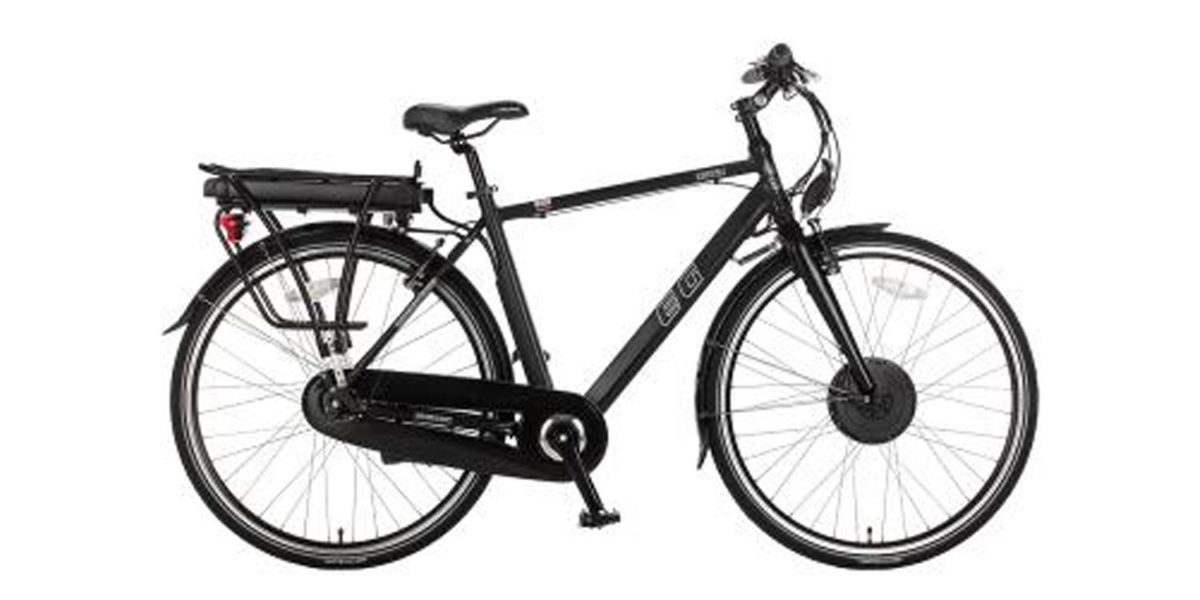







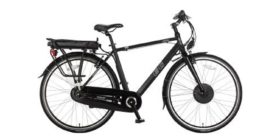








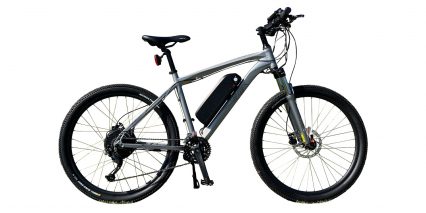
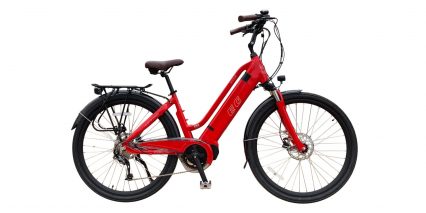
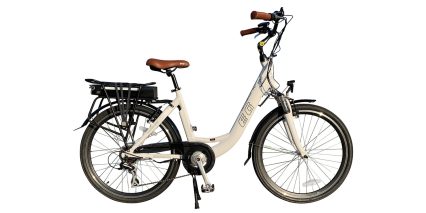
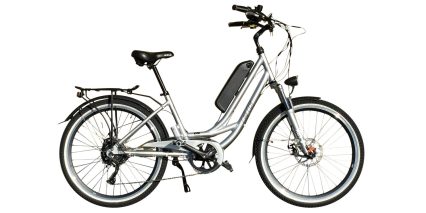
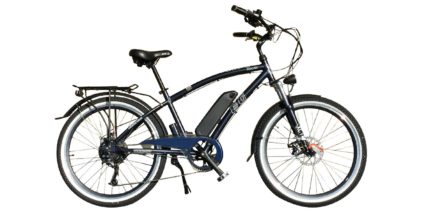

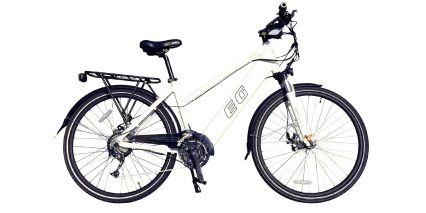
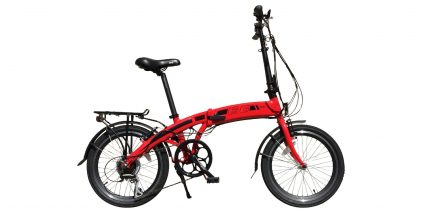
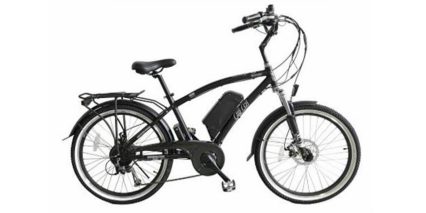

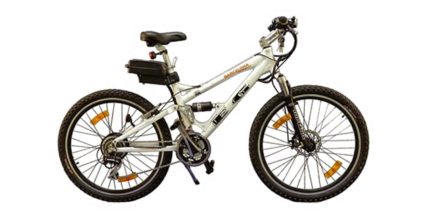
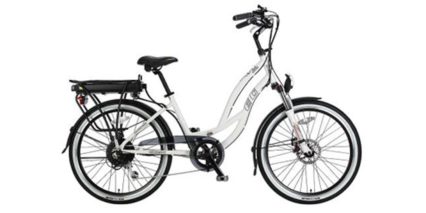

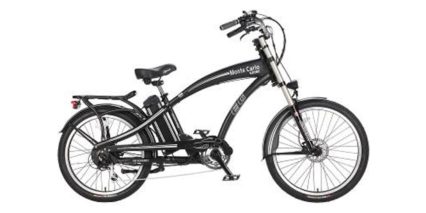
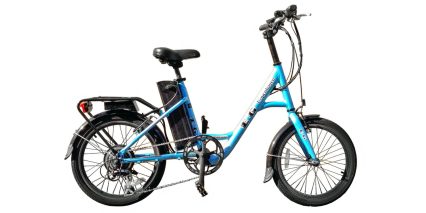

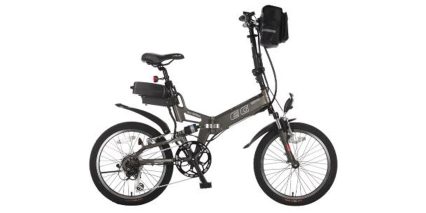
bikerjohn
11 years agoToday I settled on this bike through Electric Bikes of New England. After speaking to Paul Morlock, the proprietor, he even gave me free shipping. Seemed like a good deal!
ReplyCourt Rye
11 years agoAwesome! Glad it worked out for you man, looks like a great shop :)
Replybikerjohn
11 years agoThe EG Zurich 350 IX is a lot of bike for the money! 3 days in with this bike, I remain completely positively impressed with e bike commuting.
ReplyCourt Rye
11 years agoThanks for the testimonial bikerjohn! Glad to hear this thing is working out well for you :)
ReplyIan
11 years agoI’m assuming this doesn’t have regenerative braking since it wasn’t mentioned in the review. Are there any other similar city bikes in the price range that have regenerative brakes? Also, how important would you say that feature is overall? I’m thinking about doing a 21 mile each way commute and just wanted to know if that would come in handy for keeping my range topped off.
Also, on a side note, do you think that 21 miles each way is too long for a bike commute? I figure if I can get a quick bike with around 25 mph top speed I’ll be able to cruise at that speed for quite a bit of it, and maybe do the commute in an hour one-way which would be about the same time doing it stuck in traffic burning gas.
Thanks in advance for your reply!
ReplyIan
11 years agoAlso, another quick question – you have 20 mph listed as the top speed but the EGBike site has it listed as 25 mph. I’m assuming they’ve got the more accurate data on that?
ReplyIan
11 years agoI’m 6’1″ – would this bike work well for me on long commutes? I noticed that when you were riding in your demo that you were a little hunched over to get down to the handle bars. Just wondering if maybe it’s designed for smaller framed riders rather than tall, lanky ones like myself :)
ReplyCourt Rye
11 years agoGood question, they might have changed it but the bike I rode went 20mph and that’s the legal limit in the USA. Maybe reach out to them or call, I’d love to know what they say if you can share here once you find out :)
ReplyCourt Rye
11 years agoThis bike doesn’t offer regenerative braking but there are several brands that do (Stromer, BionX, Falco) and I’ve heard mixed reviews on how well it works. You will definitely feel it and it will save your brake pads some wear but I think it adds to the price so other brands don’t include it.
ReplyCourt Rye
11 years agoHi Ian, I’d call this a medium sized bike and the high-step version is longer than the low-step so that’s the best option. You would probably fit alright but might feel a little cramped vs. getting a larger frame on something like the Neo Cross or E3 Dash. That said, one member of the forums recently got the EG Zurich and really likes it, you could ask him here.
Replybikerjohn
11 years agoIan , on the subject of bike speed, distance, and energy consumption:
Averaging 25 mph requires a high amount of rider input as well as a high gear inch ratio. Combining those two aspects utilize a riders average sustained cadence capability to maximize bike speed .
Consider long distance biking assistance can be supplied with an electric motor.
An extreme example of the benefit from power assisted biking can be illustrated by answering a question from a would be bike commuter: A cyclist is interested in commuting a round trip distance of 42 miles and would prefer to accomplish that commute in under an hour each way, expecting a need to average 25 mph on the commute. Is it possible to accomplish that on an electric bike?
Answer: Perhaps that is a bit of a stretch of capability. Keep in mind that traveling a distance of say 40-50 miles at an average speed of say 25 mph, would require a large amp hour capacity battery (perhaps upwards of 36+ volts and 20+ ah) for a hub motored e-bike going that distance and speed. Also bear in mind that weight, wind, and rider effort are contingent. At a slower pace, using more rider effort, 40-50 miles can be achieved with 36 volts and 12 ah capacity on my Zurich 350 IX. The most significant difference required to accomplish that distance is greater rider input (substantial) and a lower average speed (say 15 mph).
The greater the speed and distance on a bike, the greater the energy required. The greater the assistance provided by the motor of an e-bike, the greater drain there will be on battery energy.
Understand too, that the greater your pedal effort, the less power drain there is on the battery. For example, if the goal for average speed is 25 mph, and if “full throttle” assist is needed in order to accomplish that speed average, then battery power consumed will be greater than if you were able to achieve that speed average with a low power assist setting.
The greatest asset to conserving battery power is pedaling effort! Adding more of your own pedaling effort, will decrease battery power consumption. Perhaps regenerative braking can help extend battery power too. But I suspect the regenerative gain is of minimal benefit for extending battery power availability on long commutes.
With the Zurich bike, I have found that my speed is limited by the gearing of the Nexus hub along with my ability to maintain hi cadence pedal effort, -regardless of electric assistance. If I could maintain a cadence of 100 rpm on my Zurich, then my average speed would be about 23.5 mph. Therein lies the limitation of speed on any bike you intend to pedal. My fastest steady cadence is about 85 rpm. I can reach a cadence upwards of 100 rpm but only for fractions of a minute. So it is a combination of a cyclist’s cadence capability, and gearing which combined will determine maximum speed.
Replybikerjohn
11 years agoIan, I may have written a confusing answer previously as to a maximum sustainable speed with the Zurich or with any bike… Basically it is contingent on rider weight and input effort, as well as environmental factors such as wind and also the energy level remaining in the battery between recharge.
– My best speed average on my 16-18 mile r/t commute has been about 19.5 mph;
– Inbound, the 8 miles from my house to Hilton is slightly downhill, and my maximum sustainable average speed is about 20.5 mph.
– If I could maintain a cadence of 100 rpm in high gear, with the configuration of the Zurich bike, my speed average would be 23.5 mph; (I have not been able to maintain that cadence for longer than a fraction of a minute.)
– I often reach a peak speeds of over 30 mph but that is on a downhill, and has little to do with e-motor assistance.
– At full throttle, I can discern power assistance up to 24 mph or so.
Being a lighter weight would not achieve much faster average speed. But a lighter weight would enable less battery power drain over a given distance.
ReplyMike
10 years agobkerjohn Has your bike held up?
Replybikerjohn
10 years agoMike, the EG Zurich has been a great commuter bike. Since acquiring the bike in May, I have logged 106 trips, with a total of 1,909.21 miles, in 108:54:10 hours, -averaging 17.64 mph; I have noticed a slight depletion of overall battery capacity, but the battery seems to have plenty of reserve to cover 20-25 miles/ 90 minutes of biking before recharging.
Reply